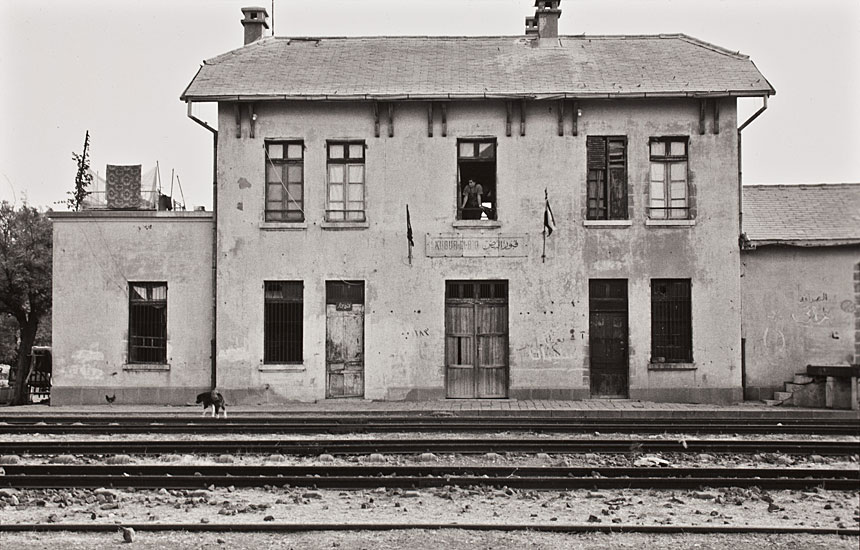The pollen record showed a pattern of climate fluctuations, with periods of relatively moist climate vegetation alternating with periods of arid climate vegetation. One such dry spell began suddenly around 1400 and lasted until the beginning of the 20th century, the same bleak era when Weiss’s regional archaeological surveys showed villages on the Khabur Plains being emptied. Because this part of Syria is semi-arid to start with and most farmers depend on a single crop of wheat or barley grown in the moist winter months, people then, as now, were highly vulnerable to climate fluctuations. In the absence of irrigation or other technological means of adapting, they practiced what Weiss characterizes as “habitat-tracking,” or moving to areas that could still sustain agriculture.
The evidence suggests, in other words, that incompetent Ottoman bureaucrats were not solely to blame for the demise of agriculture on the Khabur Plains, nor do ingenious French bureaucrats deserve much credit for its 20th-century revival. An intervening force was climate change. And those two words, together with the idea of collapsing civilizations, may explain the intensity of the reaction and the abundance of research Weiss’s work has provoked.
The Khabur River rises in Turkey and then flows south through eastern Syria, parallel to its border with Iraq, before joining the Euphrates. Weiss first arrived there in 1978 as a young archaeologist at Yale. He recalls being impressed by the harvested wheat stacked in “huge mounds” at the train station—“You don’t see that sort of thing growing up in Queens”—and it immediately struck him how productive unirrigated, rain-fed “dry farming” could be.
His focus was on the site now called Tell Leilan. Even before the height of the Akkadian empire almost 5,000 years ago, it grew from a rural village into one of the most important cities in northern Mesopotamia. The city walls from that era still rise above the Khabur Plains, enclosing almost a square kilometer of the ancient metropolis. The excavations Weiss directed revealed construction during the same period of grain storage and administrative facilities for collecting and shipping barley and wheat. Agriculture was being “commodified” and “imperialized” to support a central government or a distant imperial force. It was the ancient equivalent of the French train station.
But around 2200 B.C., both the major Khabur Plains settlements and the Akkadian Empire suddenly collapsed. The next 300 years have left their mark on Tell Leilan in the form of a thick deposit of wind-blown sand, with no architecture and hardly any trace of human habitation. Those centuries also survive in a desolate contemporary poem long thought to be a fictional account of the divine wrath that ended the empire:
For the first time since cities were built and founded,
The great agricultural tracts produced no grain,
The inundated tracts produced no fish,
The irrigated orchards produced neither wine nor syrup,
The gathered clouds did not rain…
In a 1993 article in
Science, Weiss proposed, in effect, that the poem was nonfiction. The gods were, of course, no more to blame than were Ottoman bureaucrats in more recent centuries. But the ancient agricultural collapse was real, and the cause was an abrupt climate change. Co-author Marie-Agnes Courty, a soil scientist at the National Center for Scientific Research in Paris, documented the process of sudden drying that producedwind-blown pellets and dust. Other researchers later confirmed an abrupt region-wide dust-spike. Weiss also linked what happened in Mesopotamia to the simultaneous failure of agricultural civilizations from the Aegean to India. This suggested that abrupt climate change had reduced rainfall and agricultural production across the region, reduced imperial revenues, and thereby caused the collapse of the Akkadian Empire. More recently, cores taken by other researchers from ocean and lake floors, cave stalagmites, and glaciers have indicated that this abrupt climate change was probably global.
Why the climate changed abruptly then remains a mystery. The researchers at Tell Leilan found evidence of a distant volcanic eruption, in the form of rare and microscopic volcanic tephra, but regarded that as insufficient to explain a drought that lasted 300 years. Abrupt climate changes of the past were different from modern climate change, says Weiss, in at least two regards: The cause was natural, not the result of human behavior. And where we now have technological means to track and model climate change, society then “had no prior knowledge and no understanding of the alteration in environmental conditions.”

